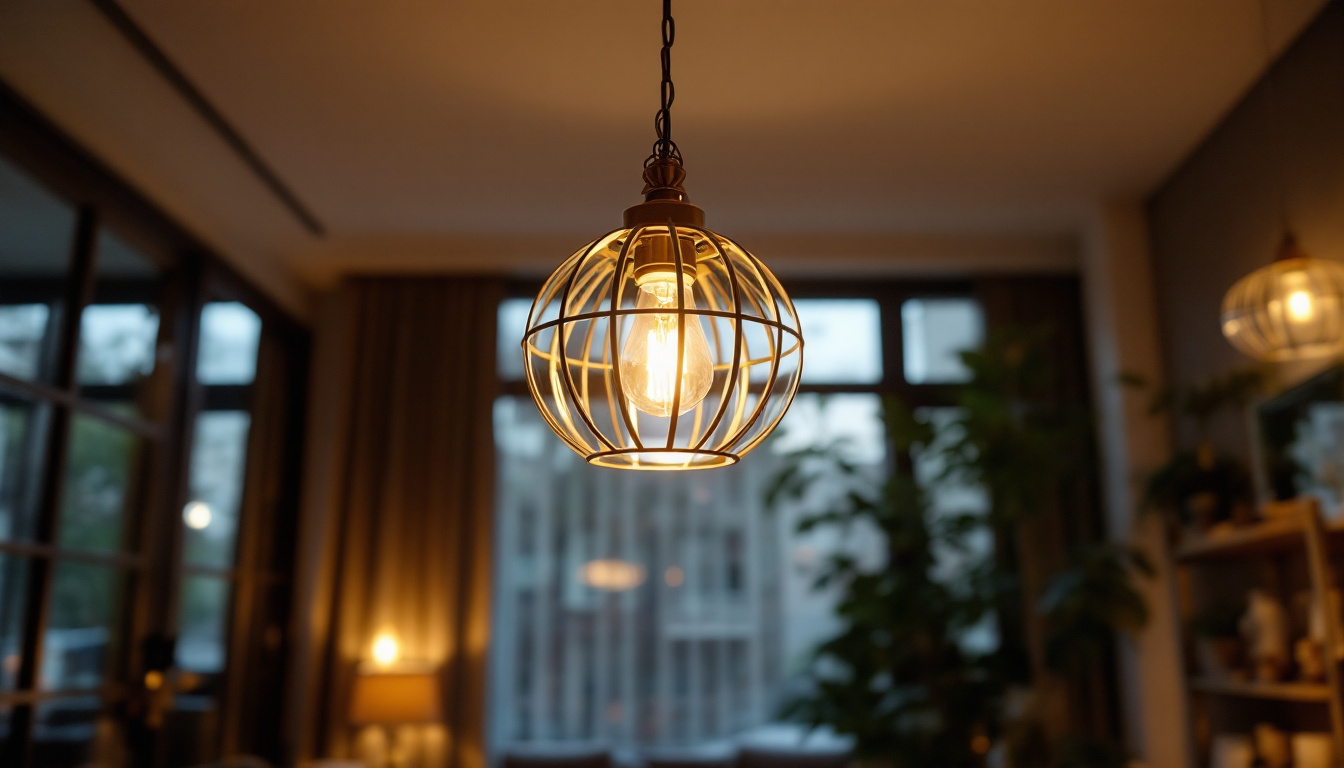
As the demand for sustainable and energy-efficient lighting solutions continues to grow, solar yard lamp post lighting has emerged as a popular choice among homeowners and businesses alike. Lighting contractors play a crucial role in guiding clients through the selection and installation process, ensuring that the chosen solutions meet both aesthetic and functional needs. This article explores the top strategies that lighting contractors can employ to effectively implement solar yard lamp post lighting in various settings.
Before diving into installation strategies, it is essential for lighting contractors to have a solid understanding of solar technology. This knowledge not only enhances the contractor’s credibility but also enables them to provide informed recommendations to clients. A comprehensive grasp of how solar technology works can also help contractors anticipate potential challenges during installation and maintenance, ensuring a smoother process for both parties involved.
Solar yard lamps typically consist of several key components: solar panels, batteries, LED lights, and control systems. The solar panels convert sunlight into electricity, which is stored in batteries for use during nighttime. LED lights are favored for their energy efficiency and longevity, while control systems manage the operation of the lamp, including automatic on/off functions based on ambient light levels. Understanding the intricacies of these components can empower contractors to troubleshoot issues more effectively and educate clients on the importance of each part in maximizing the performance of their solar lighting systems.
Contractors should familiarize themselves with different types of solar lamps available in the market, including those with integrated solar panels and those that require separate mounting. Understanding the advantages and limitations of each type can help contractors make the best recommendations based on their clients’ specific needs. For instance, integrated solar lamps are often easier to install and maintain, while separate mounting options may provide greater flexibility in terms of placement and design aesthetics. Additionally, contractors should stay updated on emerging technologies, such as smart solar lights that can be controlled via mobile apps, which can further enhance the appeal of solar solutions to tech-savvy clients.
Solar yard lamp post lighting offers numerous benefits that can be highlighted to clients. Firstly, it is an environmentally friendly option, reducing reliance on fossil fuels and lowering carbon footprints. Secondly, solar lighting can significantly reduce electricity costs, as it operates independently of the grid. Additionally, the ease of installation—often requiring no wiring—makes solar lamps an attractive choice for many homeowners. This simplicity not only saves time but also reduces labor costs, making solar lighting a financially savvy investment for many projects.
Moreover, solar yard lights enhance safety and security by illuminating pathways, driveways, and entryways. This added visibility can deter potential intruders and provide peace of mind for homeowners. Furthermore, solar lights can also contribute to the aesthetic appeal of outdoor spaces, with various designs available to complement different architectural styles. By emphasizing these benefits, contractors can effectively persuade clients to consider solar lighting solutions. Additionally, discussing the potential for solar lighting to increase property value can be a compelling selling point, as more buyers are looking for energy-efficient and sustainable features in homes today. The integration of solar lighting not only improves functionality but also aligns with the growing trend towards eco-friendly living, making it a wise choice for homeowners looking to enhance their outdoor spaces.
A successful solar yard lamp installation begins with a thorough site assessment. This step is crucial for determining the optimal placement of solar lamps to ensure maximum efficiency and performance.
One of the primary factors to consider during a site assessment is the amount of sunlight exposure the installation area receives. Contractors should evaluate the location for potential obstructions, such as trees, buildings, or fences, that may cast shadows on the solar panels. Ideally, solar lamps should be placed in areas that receive direct sunlight for a significant portion of the day.
Contractors can use tools like sunlight calculators or apps to analyze sunlight patterns throughout the year, helping them make informed decisions about lamp placement. This attention to detail can significantly impact the performance and longevity of the solar lighting system.
Once sunlight exposure has been assessed, contractors should consider the overall design and aesthetics of the lighting installation. This includes selecting lamp styles that complement the architecture and landscaping of the property. Options range from traditional lantern-style posts to sleek, modern designs, allowing for a wide variety of choices to suit different tastes.
In addition to style, the height and spacing of the lamp posts should be carefully planned. Proper spacing ensures even illumination across the area, while the height of the posts can affect the distribution of light. Contractors should aim for a balance between functionality and visual appeal, creating a cohesive look that enhances the property.
With planning complete, the next step involves the actual installation of solar yard lamp post lighting. Proper installation techniques are vital to ensure the longevity and effectiveness of the lighting system.
One of the most critical aspects of installing solar lamp posts is ensuring a stable foundation. Depending on the type of lamp and the soil conditions, contractors may need to dig holes for concrete footings or use ground stakes for stability. It is essential to follow the manufacturer’s guidelines for installation to prevent issues such as tipping or instability.
Contractors should also consider the potential for ground movement due to weather conditions. In regions with freezing temperatures, for example, frost heave can affect the stability of lamp posts. Taking these factors into account during installation can help prevent future problems and ensure that the lights remain securely in place.
While many solar lamps are designed for easy installation without complex wiring, some models may require additional components for optimal performance. Contractors should ensure that all connections are secure and waterproof, protecting the system from moisture and potential damage.
In cases where solar lamps are integrated with smart technology, such as remote control or app connectivity, contractors should follow specific guidelines for setup. This may involve connecting the lamp to a home Wi-Fi network or configuring settings through a mobile application. Clear instructions can enhance user experience and satisfaction.
To ensure the longevity and effectiveness of solar yard lamp post lighting, regular maintenance is essential. Lighting contractors can provide valuable guidance to clients on how to care for their solar lighting systems.
One of the simplest yet most effective maintenance tasks is cleaning the solar panels. Dust, dirt, and debris can accumulate on the surface of the panels, reducing their efficiency. Contractors should recommend that clients clean the panels periodically, especially after heavy storms or windy conditions.
Additionally, contractors should advise clients to inspect the lamp posts for any signs of wear or damage. Checking for loose connections, cracked lenses, or corroded components can help identify potential issues before they escalate. Providing clients with a maintenance schedule can enhance the lifespan of their solar lighting systems.
Even with proper maintenance, clients may encounter issues with their solar yard lamps. Lighting contractors should be prepared to troubleshoot common problems, such as dim lighting, flickering, or complete failure to illuminate.
In many cases, dim lighting can be attributed to insufficient sunlight exposure or dirty solar panels. Contractors should guide clients through the troubleshooting process, encouraging them to check for obstructions and clean the panels as needed. If the issue persists, it may be necessary to replace batteries or inspect the internal components for damage.
Educating clients about solar yard lamp post lighting is a vital part of a contractor’s role. By providing comprehensive information and support, contractors can empower clients to make informed decisions and feel confident in their lighting choices.
Contractors can create or share informative resources, such as brochures or online guides, that outline the benefits of solar lighting, installation procedures, and maintenance tips. These resources can serve as valuable references for clients, helping them understand the advantages of their new lighting systems.
Additionally, hosting workshops or informational sessions can foster a sense of community and encourage potential clients to explore solar lighting options. Engaging with clients in this manner not only builds trust but also positions the contractor as a knowledgeable expert in the field.
Providing after-sales support is equally important in ensuring client satisfaction. Contractors should establish clear channels for clients to reach out with questions or concerns after installation. Whether through phone, email, or social media, being readily available to assist clients can enhance their overall experience.
Offering warranties or guarantees on products and installation can also instill confidence in clients. Knowing that they have recourse in case of issues can make clients more likely to choose solar yard lamp post lighting solutions.
Solar yard lamp post lighting presents a unique opportunity for lighting contractors to offer sustainable, cost-effective solutions to their clients. By understanding solar technology, conducting thorough site assessments, employing effective installation techniques, and providing ongoing support, contractors can position themselves as trusted experts in the field.
As the demand for energy-efficient lighting continues to grow, embracing solar solutions can not only benefit contractors’ businesses but also contribute to a more sustainable future. By implementing these top strategies, lighting contractors can ensure successful installations that meet the needs and expectations of their clients.
Ready to elevate your lighting installations with the most cost-effective, high-quality solutions on the market? Look no further than LumenWholesale. We specialize in providing contractors like you with spec-grade solar yard lamp post lighting and other lighting products at unbeatable wholesale prices. Say goodbye to local distributor markups and hello to our premium selection that meets rigorous industry standards. Plus, with free shipping on bulk orders, you can trust that you’re getting the best value without any hidden costs. Make your next project shine with the perfect blend of quality, affordability, and convenience at LumenWholesale. Wholesale Lighting at the Best Value.

Discover the ins and outs of ceiling mount motion sensors tailored for lighting contractors.

Discover the essential tips and expert advice for selecting the perfect dock post lights in this comprehensive guide tailored for lighting contractors.

Discover why lighting contractors should prioritize replacing overhead lights with LEDs in business settings.

Unlock the secrets of hanging ceiling lights with our comprehensive guide tailored for lighting contractors.